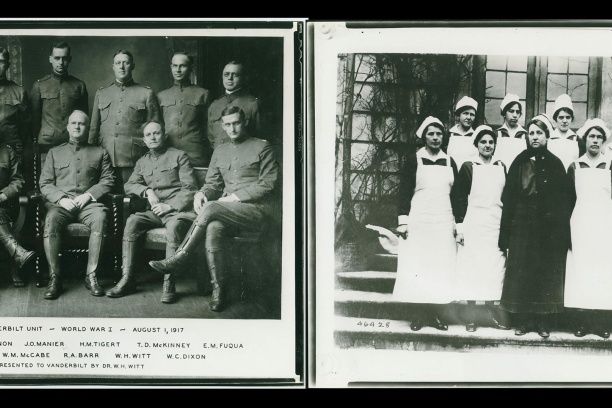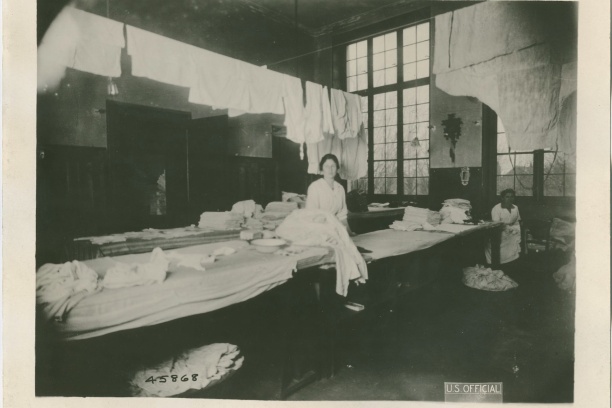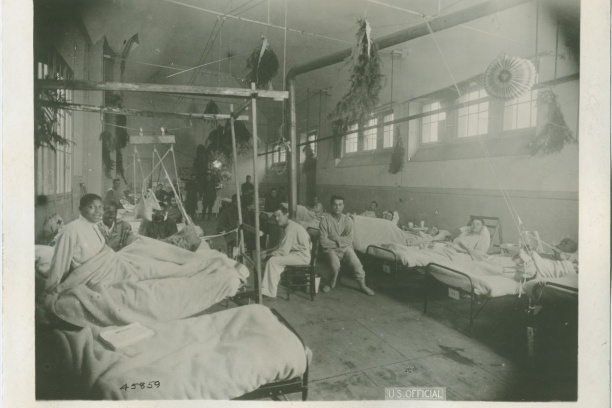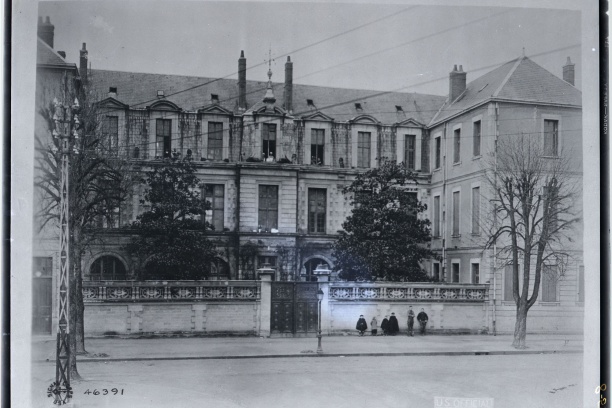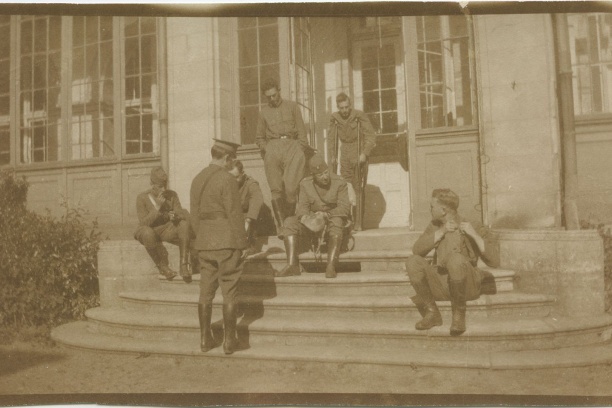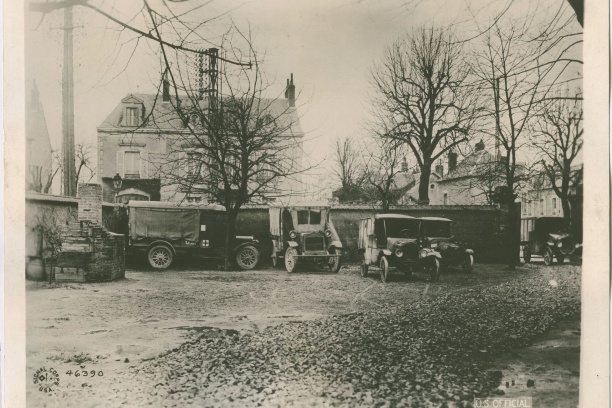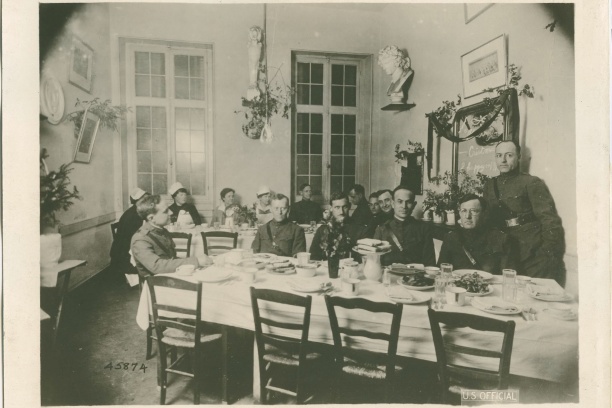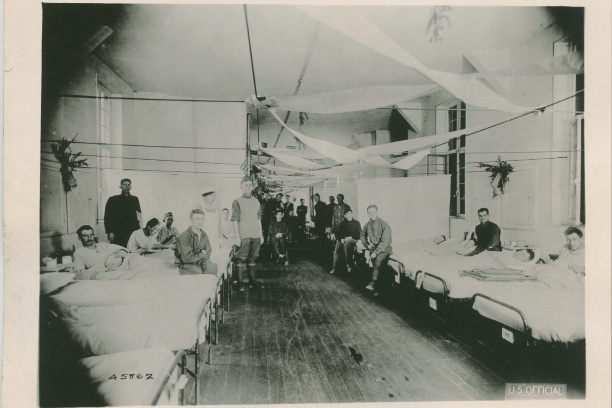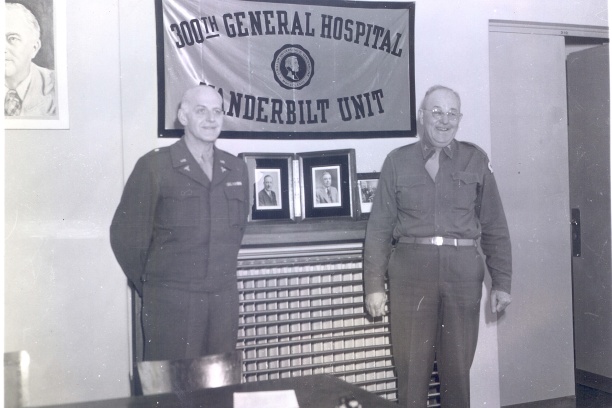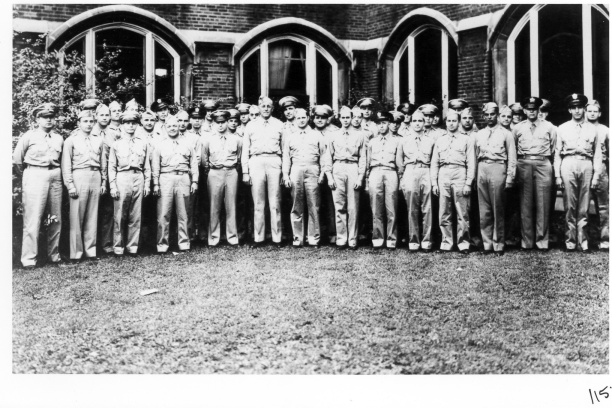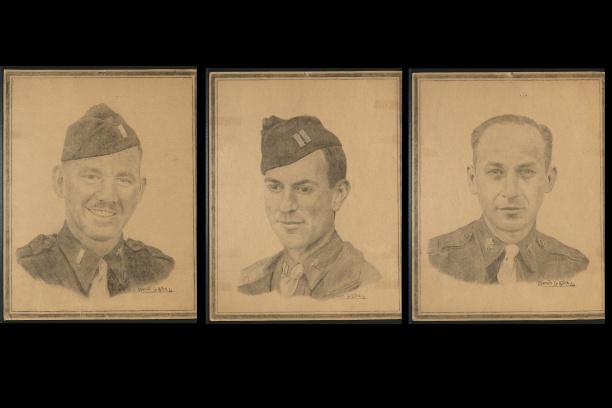Vanderbilt and Military Medicine: A History
Since the early 1900s Vanderbilt has had a relationship with the US Army and military medicine. Starting with the inception of Vanderbilt’s Student Army Training Corps (SATC) in 1917 through present day with Army Medicine’s new Strategic Medical Asset Readiness Training (SMART) and Army Medicine Military-Civilian Trauma Team Training (AMCT3) programs.
WWI and the National Defense Act of 1916
James H. Kirkland, Vanderbilt’s Chancellor from 1893 to 1937, was an enthusiastic proponent of bringing military training to campus as the First World War loomed ever closer. He believed that military training would be beneficial to the discipline and citizenship of Vanderbilt’s students, as well as provide a way for the university to support the war effort. With near universal support of the faculty, he petitioned the Army for a unit of the Student Army Training Corps, or SATC in 1917, and while the negotiations with the government took place, Vanderbilt Medical Students organized a special medical unit which left in 1918 for service at several camps across the country. Vanderbilt sent medical doctors to operate Vanderbilt Hospital Unit “S” along with enlisted men and nurses recruited from the Nashville area, based in Nevers, France in the Bourogne region. In December 1918, Vanderbilt received notification that a unit of the Coast Artillery Corps of ROTC, the organization that replaced the SATC was coming to its campus. For the first year of its existence, ROTC would be compulsory for all males except seniors, later becoming a voluntary activity in 1920.
“You do not need to be reminded that out of the medical faculty there was organized our splendid Vanderbilt Unit “S,” which so successfully conducted Camp Hospital 28 at Nevers. … Every one of these officers was proud to be a Vanderbilt man, and proud to be a member of the Medical Corps—almost as proud as if he were a marine. When the wounded men were brought into the operating room without their uniforms, one couldn’t tell whether they were Americans, French or English. We had over 17,000 shattered bones to mend, over 3,500 arms and legs to amputate, and 20 times that many to save.”
—Lt. Col. W.D. Haggard, February 1919 address to the Vanderbilt Club of Nashville
Alumni Hall opened in 1925 as Vanderbilt's first Collegiate Gothic style building, it was the university's first student center and the hub of student activity for nearly fifty years. The building memorializes Vanderbilt alumni, former students, and faculty who lost their lives in WWI. The names of the 44 Vanderbilt casualties from WWI are carved in stone above the two fireplace mantles, located at either end of the room.
After World War I and throughout the interwar years, the Vanderbilt ROTC program had robust participation in the School of Medicine and steadily generated officers for the Army’s hospitals.
WWII
During WWII Vanderbilt School of Medicine continued to produce doctors, nurses, and allied health professionals for the war effort. Many of these Vanderbilt doctors and other medical professionals would later go on to serve overseas in the locally renowned “Fighting 300th” General Hospital Unit during the Second World War. This unit was deployed to Tunisia and then to Naples, Italy to care for those wounded in combat.
Following the war, the United States continued to need Soldiers to man the massive peacetime army that occupied territory all over the globe, and Vanderbilt continued producing Medical Officers to support this need.
Into the 21st Century
Vanderbilt’s partnership with the military has grown substantially in recent years. The foundation of this partnership has been the education and training of military physicians that serve as core personnel on combat casualty care teams.
The VUMC Trauma Fellowship has consistently had active duty military surgeons since the War on Terror began in 2001. Military alumni of the fellowship program include Servicemembers from the Army, Navy, and Air Force. Through the Trauma Outreach and Education office, medical proficiency training (MPT) rotations for US Special Forces personnel have been occurring since 2007.
In 2019 an agreement was signed between the Army Office of the Surgeon General (OTSG) and VUMC to support the expansion of the military-civilian partnerships, by joining in partnership with VUMC. This agreement brought two programs to VUMC that support the Army medical mission, the Strategic Medical Asset Readiness Training (SMART) and Army Military-Civilian Trauma Team Training (AMCT3). In 2020, the first active-duty Army personnel arrived at VUMC as part of VUMC’s AMCT3, and as of 2023 the AMCT3 group has grown to seven active duty members. The Army personnel that make up the VUMC AMCT3 team include Trauma & Acute Care Surgeons, Emergency Medicine physicians, Anesthesiologists, CRNA, Critical Care RN, and Emergency Medicine RN. The members of the VUMC AMCT3 work daily alongside their civilian counterparts as contributing members of VUMC’s patient care teams.
VUMC had their first SMART rotation in 2021, led by Chris Brown. Since this first rotation, active duty enlisted Army medical personnel rotate through VUMC quarterly through the SMART program for skill sustainment in their medical professions. These professions can include Combat Medics, LPN, OR techs, radiology techs, and respiratory therapists.
The Military-Civilian partnership continues to grow to support VUMC, the Tennessee community and our Armed Forces.
